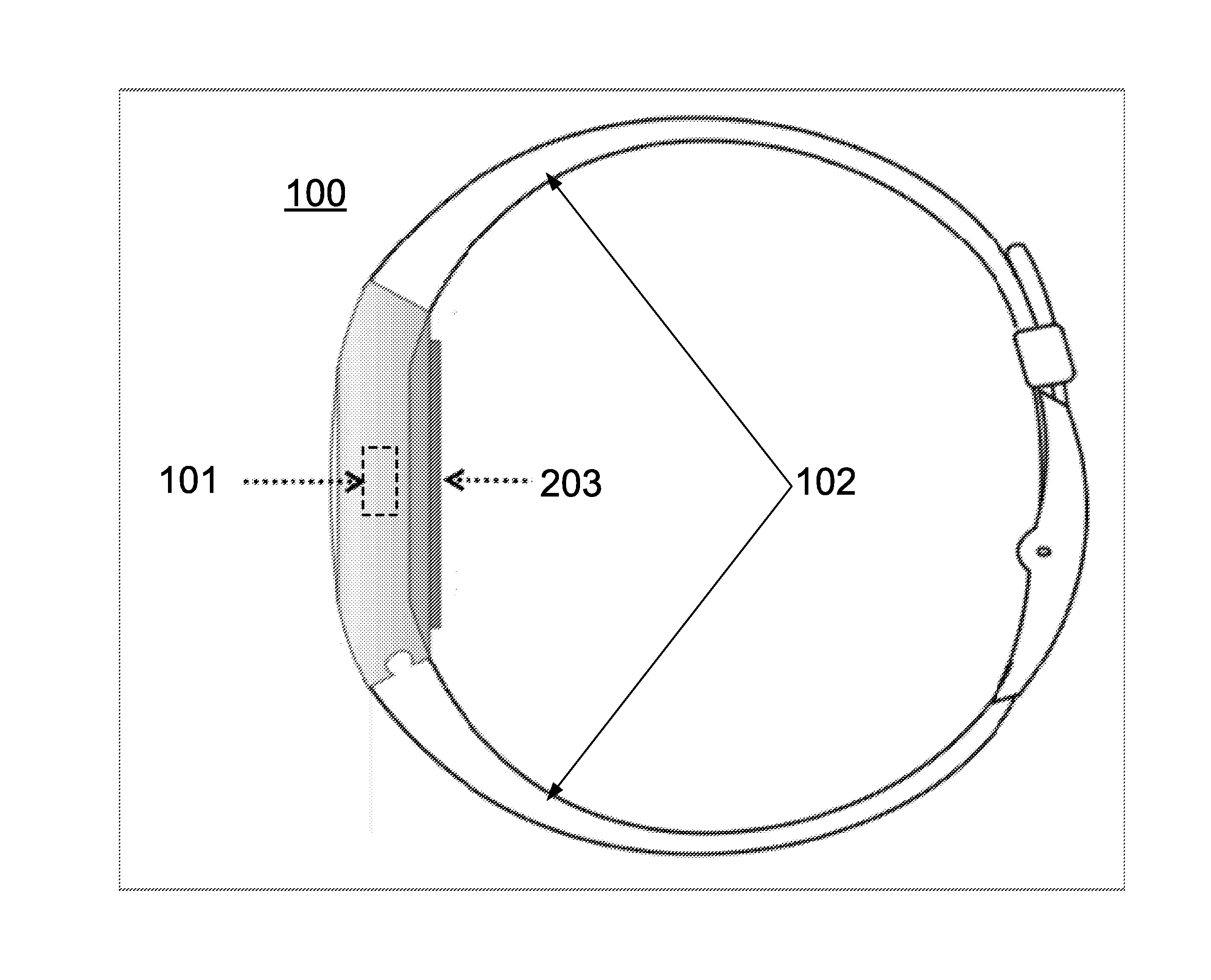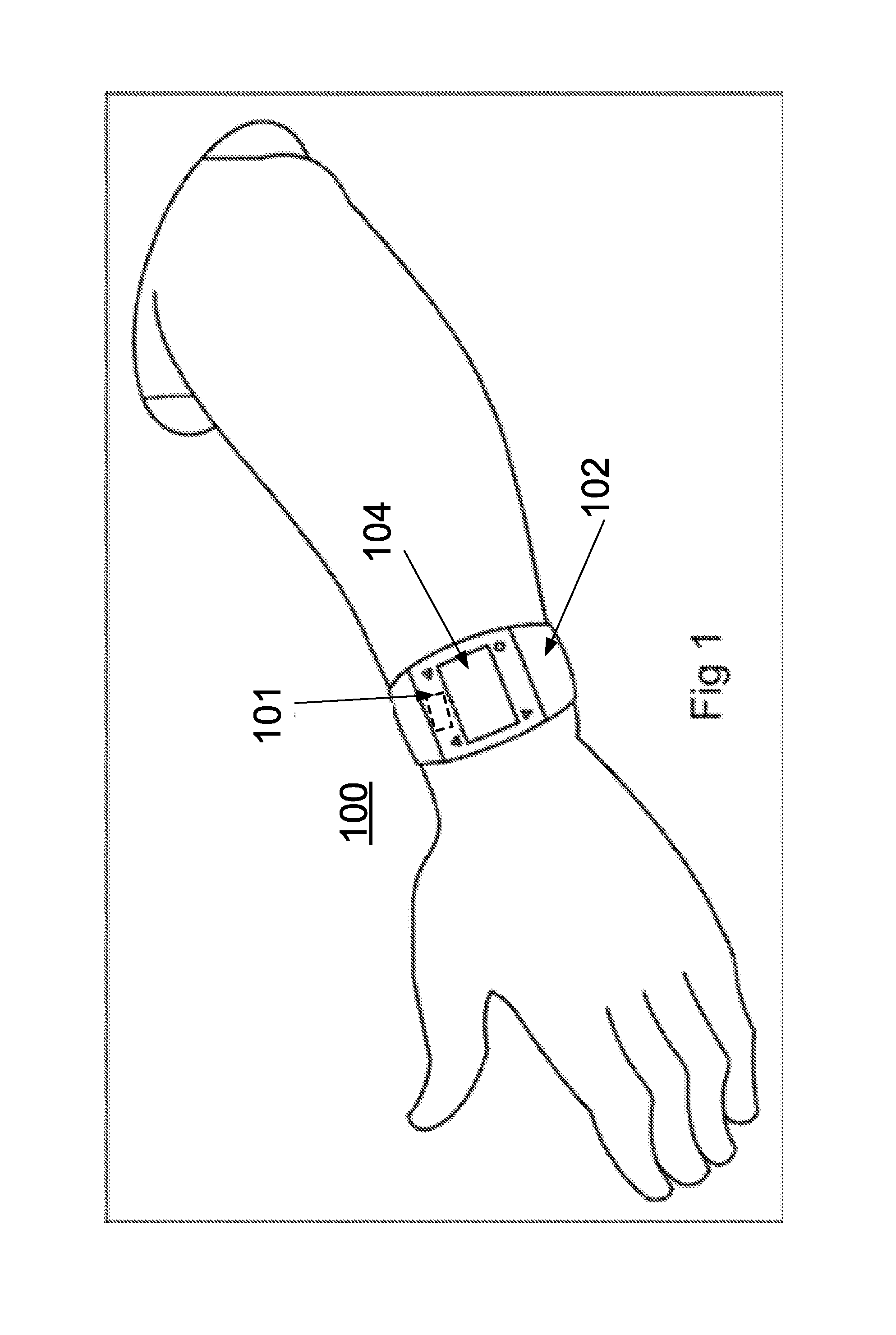Detection of emotional states
a technology for emotional states and detection devices, applied in the field of measuring and characterizing stress, can solve problems such as continuous monitoring
- Summary
- Abstract
- Description
- Claims
- Application Information
AI Technical Summary
Benefits of technology
Problems solved by technology
Method used
Image
Examples
example processing configuration
[0033]Referring now to FIGS. 6 through 13, illustrated is an example method for acquiring signals from the optical sensor 405 and determining parameters about the emotional state of the user at or around the time the signals were acquired. Specifically the method identifies and characterizes the user's stress state.
[0034]Referring first to FIG. 6, light is emitted 601 from the optical emitters 407. An optical signal is acquired 603 via the optical sensor 405. The emission of light and subsequent collection of signals can take place continuously while the device is worn by the user. Whether the device is being worn can be assessed through any means known in the art, including, but not limited to, use of a proximity sensor. Alternatively, the optical sensing system 203 is not continuously active. In some embodiments, the optical sensing system 203 generates data at intervals. The intervals may be regular or irregular. The processor 101 may activate the optical sensing system 203 in re...
example 1
[0051]In this example the features of Category 1 in Table 1 were used. The smaller feature set was found to be predictive and is thus useful as it reduces processing. When the method is implemented on a wearable device, it beneficially allows for longer data collection on the limited storage in the wearable device.
[0052]In order to develop the algorithm, studies were performed with a cohort of subjects varying in age, gender, background and physical dimensions. During these studies, subjects were subjected to various situations and stimuli designed to elicit particular emotional states. The study was performed with three phases:[0053]1. Phase 1—Subjects were allowed to relax in a calm setting, with minimal ambient noise and in comfortable seating. They were instructed to enjoy a calm, relaxing time while staying awake.[0054]2. Phase 2—Subjects engaged in a series of cognitive exercises under time pressure to induce a state of cognitive stress.[0055]3. Phase 3—Phase 1 was repeated to...
example 2
Normalization
[0080]In order to correct for inter-subject differences, data may be used for calibration or normalization. Normalization method parameters may include biasing terms (addition and subtraction), scaling terms (multiplication and division), or other non-linear processing parameters such as raising variables to a given power, and remapping the feature space via logarithmic, exponential or logistical transforms. Normalization parameters may be derived from scientific literature, or dynamically from the data itself using statistical or unsupervised learning techniques.
[0081]For example, one feature that may be important in assessing the presence of an emotional arousal state is an increase in heart rate magnitude. Since different subjects may naturally have different heart rate magnitude levels when calm or aroused, it may be necessary to normalize a subject's observed heart rate magnitude. In one embodiment, the user's data is recorded during a 24 hour period and this data ...
PUM
 Login to View More
Login to View More Abstract
Description
Claims
Application Information
 Login to View More
Login to View More - R&D
- Intellectual Property
- Life Sciences
- Materials
- Tech Scout
- Unparalleled Data Quality
- Higher Quality Content
- 60% Fewer Hallucinations
Browse by: Latest US Patents, China's latest patents, Technical Efficacy Thesaurus, Application Domain, Technology Topic, Popular Technical Reports.
© 2025 PatSnap. All rights reserved.Legal|Privacy policy|Modern Slavery Act Transparency Statement|Sitemap|About US| Contact US: help@patsnap.com



